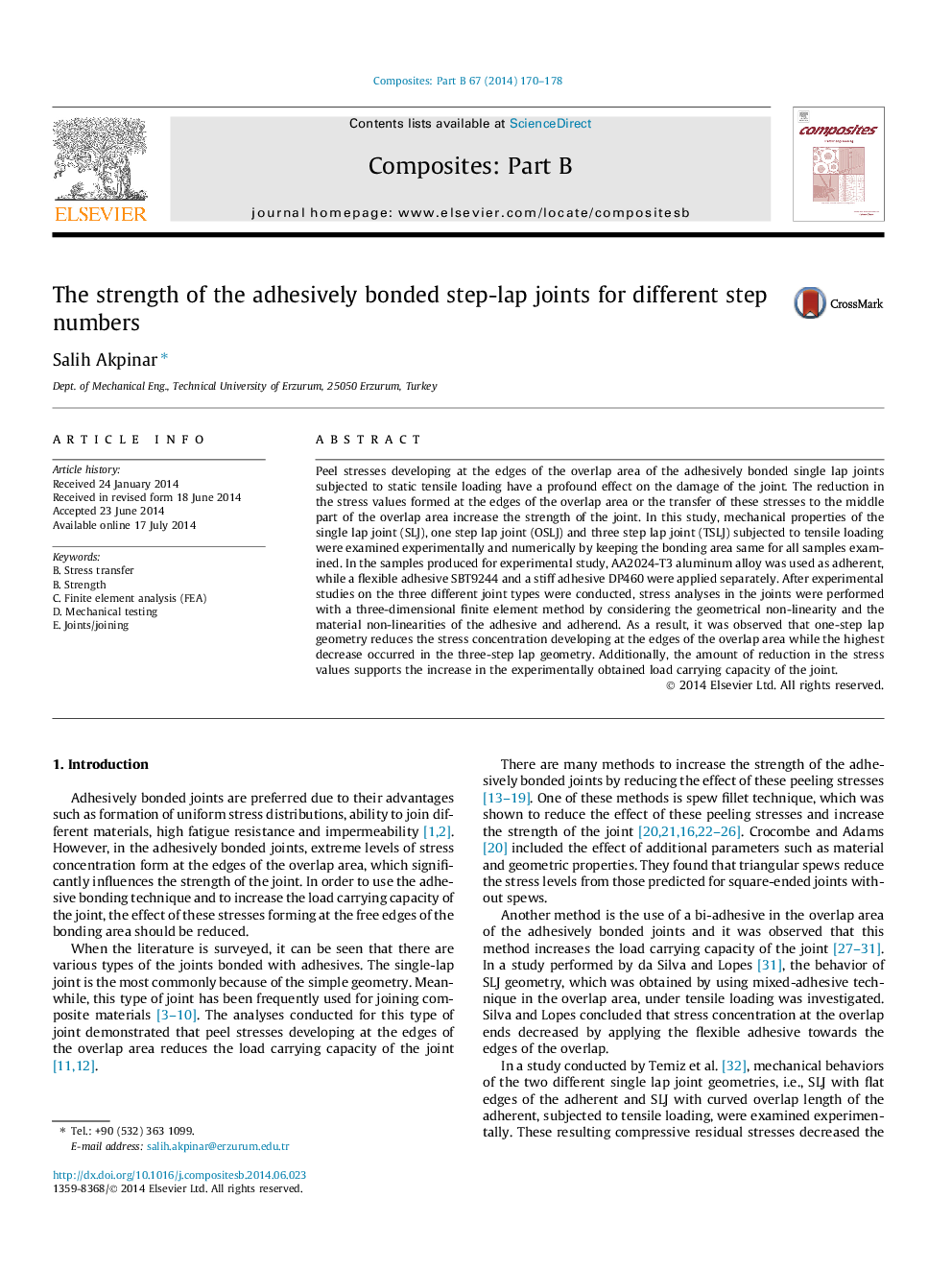| کد مقاله | کد نشریه | سال انتشار | مقاله انگلیسی | نسخه تمام متن |
|---|---|---|---|---|
| 7213375 | 1469418 | 2014 | 9 صفحه PDF | دانلود رایگان |
عنوان انگلیسی مقاله ISI
The strength of the adhesively bonded step-lap joints for different step numbers
ترجمه فارسی عنوان
قدرت اتصالات گام به گام چسبنده برای تعداد گام های مختلف
دانلود مقاله + سفارش ترجمه
دانلود مقاله ISI انگلیسی
رایگان برای ایرانیان
کلمات کلیدی
موضوعات مرتبط
مهندسی و علوم پایه
سایر رشته های مهندسی
مهندسی (عمومی)
چکیده انگلیسی
Peel stresses developing at the edges of the overlap area of the adhesively bonded single lap joints subjected to static tensile loading have a profound effect on the damage of the joint. The reduction in the stress values formed at the edges of the overlap area or the transfer of these stresses to the middle part of the overlap area increase the strength of the joint. In this study, mechanical properties of the single lap joint (SLJ), one step lap joint (OSLJ) and three step lap joint (TSLJ) subjected to tensile loading were examined experimentally and numerically by keeping the bonding area same for all samples examined. In the samples produced for experimental study, AA2024-T3 aluminum alloy was used as adherent, while a flexible adhesive SBT9244 and a stiff adhesive DP460 were applied separately. After experimental studies on the three different joint types were conducted, stress analyses in the joints were performed with a three-dimensional finite element method by considering the geometrical non-linearity and the material non-linearities of the adhesive and adherend. As a result, it was observed that one-step lap geometry reduces the stress concentration developing at the edges of the overlap area while the highest decrease occurred in the three-step lap geometry. Additionally, the amount of reduction in the stress values supports the increase in the experimentally obtained load carrying capacity of the joint.
ناشر
Database: Elsevier - ScienceDirect (ساینس دایرکت)
Journal: Composites Part B: Engineering - Volume 67, December 2014, Pages 170-178
Journal: Composites Part B: Engineering - Volume 67, December 2014, Pages 170-178
نویسندگان
Salih Akpinar,
